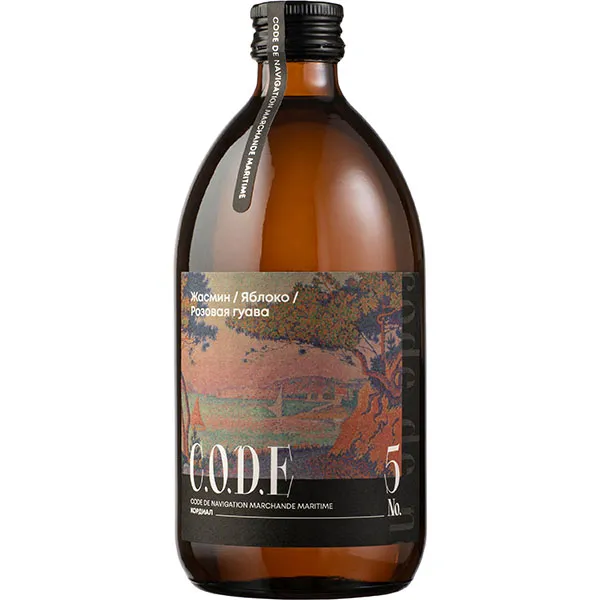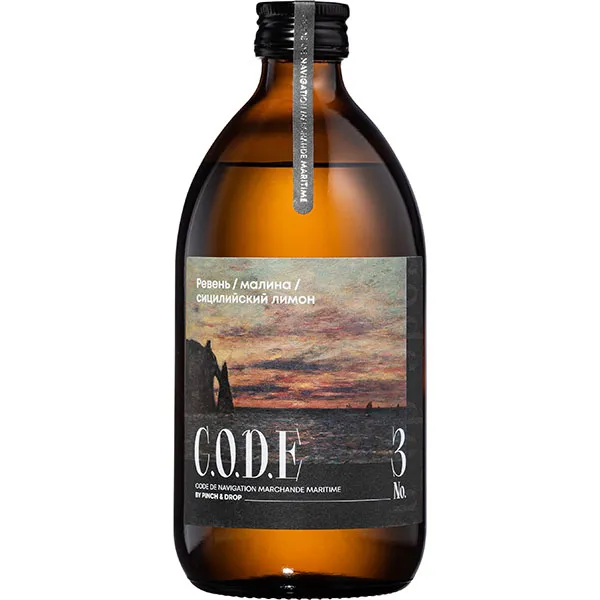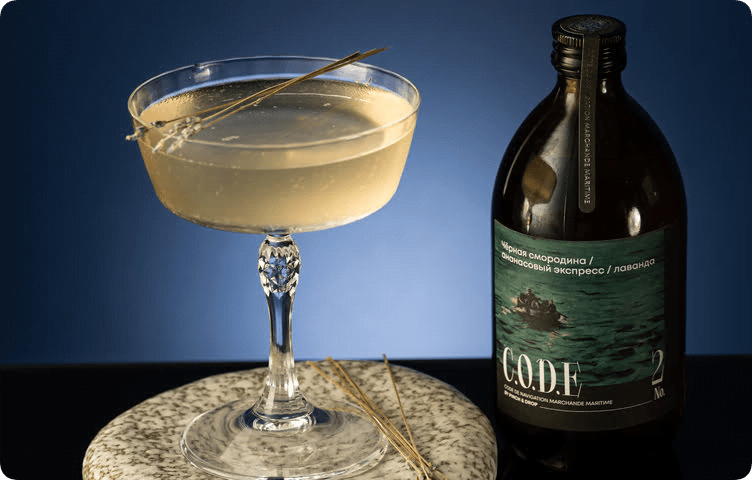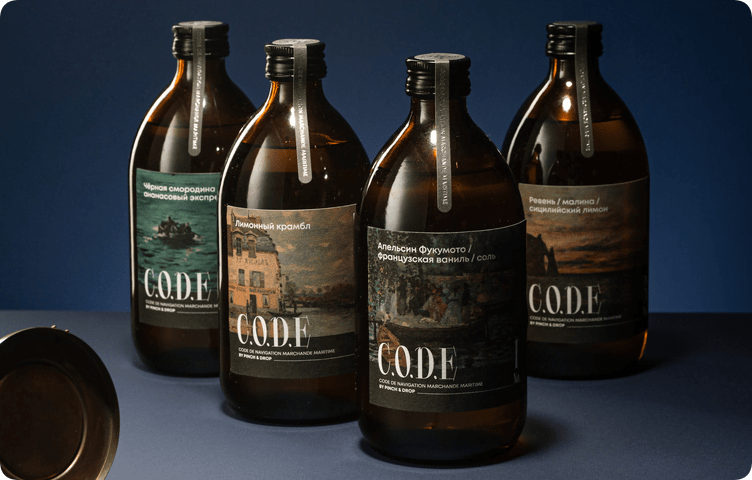Cordials have been mentioned since the 14th century. For example, in Britain this was the name for tinctures that were considered beneficial for the heart, hence their name ( cordialis - in Latin “hearty” ). And in the navies of England and France, cordials were included in the diet of sailors to prevent scurvy, as they contained lemon juice.
Initially, they contained alcohol, but by the end of the 19th century, the first non-alcoholic lime cordial was patented in Great Britain, where sugar acted as a preservative.
What is cordial now?
Medicinal use is a thing of the past, but the love for delicious drinks remains. In simple words , non-alcoholic cordial is a preparation in which the sweet, sour and aromatic parts are balanced.
Cordials have become an integral part of bartending and drinking culture in many countries. Premixes are very popular due to their rich taste, aroma and ease of use. And they are used not only for making drinks, but also in cooking.
What types of cordials are there?
By the 21st century, the non-alcoholic version of cordial had practically supplanted its alcoholic counterpart. Alcoholic cordials still exist, but more often cordial is understood as a transparent premix based on various fruits, spices and herbs.
Based on the premix we can distinguish:
| Short description | |
|---|---|
 | Fruit cordials The basis is a certain type of fruit or a varied mix. They have a rich, juicy taste and are used to create various cocktails and add to desserts. |
 | Citrus cordials Made from citrus fruits such as lemon, lime, orange or grapefruit. They have a refreshing taste with a pleasant sourness, which is ideal for preparing summer refreshing cocktails, as well as sauces and dressings. |
 | Herbal (spicy) cordials They are created on the basis of various herbs and spices. They have a rich aroma and complex, dense taste that is ideally revealed in alcoholic cocktails. |
In general, cordials can have the most varied and complex flavor combinations of all the options listed.
What is included in the premix
Classic cordial contains juice or extract of fruits, flowers, spices, herbs, as well as sugar and drinking water . Bartenders often prepare their own premixes. In industrial settings, natural preservatives and antioxidants are added to extend shelf life and maintain product freshness.
Organic acids , such as lactic, malic and tartaric, are also used to create a balance between sour and sweet taste. The composition and proportions of ingredients vary depending on the specific type of cordial.
Fruit extracts or juices are the main source of flavor in cordials. They form the basis of the premix and give the finished drinks a bright and special taste.
Spices and herbs add aromatic notes and complement the flavor profile of the premix. Sugar is used to add sweetness and enhance flavor to the cordials.
The sweet part of the cordial varies depending on the overall balance of the pribetcha.
What is the difference between cordial and syrup
Cordials are a fairly new product, and there is already a tendency to use syrups for making drinks.
Let's figure out why cordials deserve special attention.
Cordials and syrups have one thing in common - they are both used to add richness, extra flavor and aroma to drinks. However, they also have significant differences:
Concentration
Cordials are lighter, softer, finer, with the right balance between sweetness, acidity and aromatics. And, as a rule, they contain less sugar in their composition. While syrups are concentrated products with a high sugar content, they often lack a balance of acidity in taste.
Compound
In addition to sugar, cordials contain aromatic additivesaquas, fruit extracts and herbs. Syrups typically contain sugar and flavorings, but no extracts or additives.
Application
In culinary traditions, cordials are more often used to prepare alcoholic cocktails, while syrups are more often used in soft drinks and desserts.
Thus, the differences between cordials and syrups lie in concentration, composition and traditional use.
Application of cordials

Bartenders claim that cordial is a good, natural base for many non-alcoholic and alcoholic cocktails . They are suitable for mixing with strong alcohol such as vodka, tequila, gin, whiskey, rum, and allow you to easily create a variety of cocktails.
They interestingly reveal the taste of wine , including non-alcoholic ones, and are suitable for making cocktails with sparkling wines, prosecco and champagne.
Cordials can also be added to coffee brewed using alternative methods such as drip, V60 and cold brew to add an interesting fruity, spicy flavor and aroma to the brew.
Now there is a fairly widespread trend of using cordials to prepare a variety of desserts . Premixes are added to cream or dough, which acquire a soft, natural sweetness and delicate aroma of flowers or berries. Also, these bases have proven themselves remarkably well in cooking for making sauces and dressings .
Features when choosing a product
There are various types of cordials available in the market, each with its own unique taste and aroma. When choosing cordials, you should pay attention to the following factors:
- Taste. Choose a cordial that suits your preferences. Some prefer fruity ones, while others go for sweet floral and spicy flavors.
- Quality. Please pay attention to the manufacturer and check product information. Well-known and trusted brands produce high-quality and safe products.
- Compatibility. Consider what drinks you plan to use cordial in. Make sure the option you choose will pair well with the other ingredients in the drink.
For example, for cordials from the Russian brand CODE , manufacturers give clear recommendations on the most advantageous combinations of a particular taste with various alcohols.
How to store it correctly
Rules for storing cordials depend on the type of premix and the manufacturer's instructions, but there are several general recommendations:
Storage temperature. Cordials are best stored in a cool, dry place at temperatures between 5 and 20°C. Avoid storage in extremely high or low temperatures, such as a freezer or refrigerator.
No direct sunlight. The cordials should be protected from light as this will help maintain the quality and flavor of the premix. Store the bottle in a dark place such as a closet or drawer.
Tightness. Make sure the cap or cap on the cordial bottle is tightly closed to prevent air from getting inside. This will help maintain the freshness and flavor of the cordial.
Duration of storage. Cordials have low degree strength, but can be stored for quite a long time. However, premixes will retain their original taste if consumed within three months of opening the bottle.
Service. Store the Cordial bottle in an upright position to minimize the area exposed to air. Also check the condition of the bottle and contents before each use - check for signs of contamination, changes in color and aroma.
It is important to follow the manufacturer's recommendations on the label, as some cordials may have storage conditions.
As we found out, you can make cordials yourself, or you can purchase a ready-made balanced premix. If you are interested in this unique product, we recommend trying CODE cordials
The assortment includes already favorite flavors:

"Rhubarb / Raspberry / Sicilian Lemon"
"Fukumoto Orange / French Vanilla / Salt"
"Blackcurrant / Pineapple Express / Lavender"
The CODE brand also presented exclusive new products, and you already have the opportunity to try the following flavors:
"Pomegranate / Walnut / Jaffa"
"Jasmine / Apple / Pink Guava"
"Lychee / White Lotus / Cardamom"
Making a cordial-based drink is very simple: add ice and your preferred alcohol, and you can enjoy an original cocktail. Follow our recommendations, experiment and create your best drinks!
















































/https%3A%2F%2Fcomplexbar.com%2Fimages%2Fblog%2F243%2Fkordials.jpg)
/https%3A%2F%2Fcomplexbar.com%2Fimages%2Fblog%2F245%2Fskov_glavn.jpeg)
/https%3A%2F%2Fcomplexbar.com%2Fimages%2Fblog%2F245%2Fhaiboli.jpg)
/https%3A%2F%2Fcomplexbar.com%2Fimages%2Fblog%2F245%2Fvilki-na-stole-752x480.jpeg)
/https%3A%2F%2Fcomplexbar.com%2Fimages%2Fblog%2F246%2F2024-04-09_17.22.54.jpg)
/https%3A%2F%2Fcomplexbar.com%2Fimages%2Fblog%2F246%2F2024-04-09_17.22.47.jpg)
/https%3A%2F%2Fcomplexbar.com%2Fimages%2Fblog%2F246%2FCODE_anons_foamydrops_752%D1%85480_eng.jpg)
/https%3A%2F%2Fcomplexbar.com%2Fimages%2Fblog%2F246%2FAlina_752%D1%85480_eng.jpg)
/https%3A%2F%2Fcomplexbar.com%2Fimages%2Fblog%2F246%2F2024-04-09_17.23.22.jpg)
/https%3A%2F%2Fcomplexbar.com%2Fimages%2Fblog%2F246%2F2024-04-09_17.23.28.jpg)
/https%3A%2F%2Fcomplexbar.com%2Fimages%2Fblog%2F246%2F2024-04-09_17.23.35.jpg)
/https%3A%2F%2Fcomplexbar.com%2Fimages%2Fblog%2F246%2Fdrinksome_752%D1%85480_eng.jpg)
/https%3A%2F%2Fcomplexbar.com%2Fimages%2Fblog%2F246%2Fnude_752%D1%85480_eng.jpg)
/https%3A%2F%2Fcomplexbar.com%2Fimages%2Fblog%2F246%2F752%D1%85480_eng__1_.jpg)
/https%3A%2F%2Fcomplexbar.com%2Fimages%2Fblog%2F246%2F752%D1%85480_eng.jpg)
/https%3A%2F%2Fcomplexbar.com%2Fimages%2Fblog%2F246%2FStudioRaw_752%D1%85480_eng.jpg)
/https%3A%2F%2Fcomplexbar.com%2Fimages%2Fblog%2F246%2FDoppio_tea_752%D1%85480_eng.jpg)
/https%3A%2F%2Fcomplexbar.com%2Fimages%2Fblog%2F246%2FTognana_Stars_Stripes_752%D1%85480_eng.jpg)
/https%3A%2F%2Fcomplexbar.com%2Fimages%2Fblog%2F246%2FRona_752%D1%85480_eng.jpg)
/https%3A%2F%2Fcomplexbar.com%2Fimages%2Fblog%2F246%2FDoppio_vending_752%D1%85480_eng.jpg)
/https%3A%2F%2Fcomplexbar.com%2Fimages%2Fblog%2F246%2FEssence_sukhie_smesi_752%D1%85480_eng.jpg)
/https%3A%2F%2Fcomplexbar.com%2Fimages%2Fblog%2F246%2FODK_sukhie_smesi752%D1%85480_eng.jpg)
/https%3A%2F%2Fcomplexbar.com%2Fimages%2Fblog%2F246%2Funiforma-barmena.jpg)
/https%3A%2F%2Fcomplexbar.com%2Fimages%2Fblog%2F246%2Fkak-nanyat-barmena.jpg)
/https%3A%2F%2Fcomplexbar.com%2Fimages%2Fblog%2F246%2Fsirop_scale_2400.jpeg)
/https%3A%2F%2Fcomplexbar.com%2Fimages%2Fblog%2F246%2FPeugeot_Anons_Paris_U%27Select_Line_Daman_752%D1%85480_eng.jpg)
/https%3A%2F%2Fcomplexbar.com%2Fimages%2Fblog%2F246%2Fkofe-vostochniy.jpg)
/https%3A%2F%2Fcomplexbar.com%2Fimages%2Fblog%2F246%2FMadler.jpg)
/https%3A%2F%2Fcomplexbar.com%2Fimages%2Fblog%2F246%2Fprofbartender_glavn.jpeg)